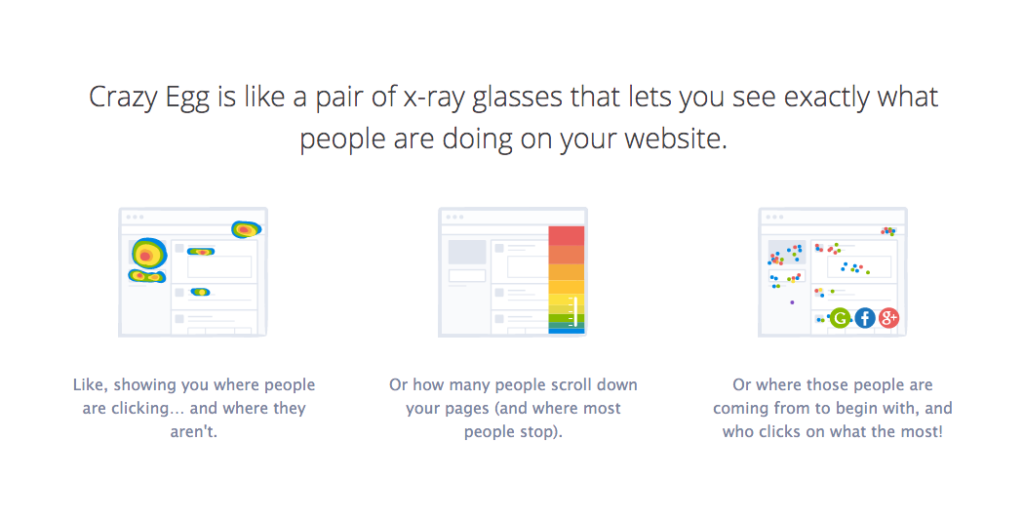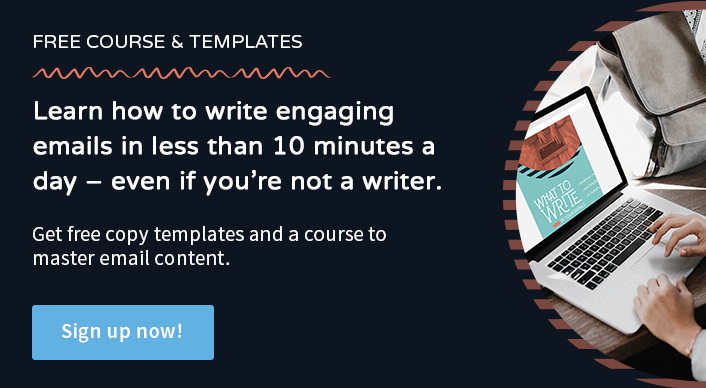6 Proven Ways To Make Your Writing More Influential
By Monica Montesa April 12, 2016
If you write copy for an audience (whether in the form of an email, website or blog post) you have one job – and that’s to persuade readers to take action.
Unfortunately, that often means you’re left to assume that what you’re writing is going to do the job. But what if I told you there were a few best practices you can embrace to make writing a little bit easier?
Over the last few decades, psychologists have studied the ways in which specific words and their arrangement can impact people’s understanding of the underlying message. And since creating a clear and influential message is always the main goal, these findings can bring a little more clarity to our writing.
Let’s dive right in.
1. Make words rhyme, establish trust every time.
This isn’t a tool that’s exclusive to children’s books. Rhyme not only makes it easier for people to interpret what you’re saying, it can also help you establish trust with your audience in a powerful way.
The Studies: According to a study conducted by researchers at Lafayette College, rhyme allowed statements to be more easily processed in the brain. Some psychologists believe this supports the Fluency Heuristic theory, which suggests that people are motivated by “the ease of things we encounter.”
In another study in that appeared in Psychology Today, a group of students were given a list of phrases that rhyme and phrase that didn’t. The result? Students thought the phrase that rhymed more accurately described human behavior.
Give it a try! Consider rhyming your subject line or headlines in an email, blog post or website copy. The best way to determine if it works is to conduct a split test to see if it impacts engagement and conversions.
2. Justify the actions you want readers to take.
Simply telling people what to do isn’t enough. If you really want them to be persuaded enough to take a specific action (like clicking your call-to-action button to check out a product page), you need to give them a clear reason why they should do so.
The Study: In the 1970s, a researcher from Harvard decided to test the impact of the word “because,” specifically how it influences (or doesn’t influence) people’s behaviors. To set up the test, he created a scenario where participants in the study needed to jump ahead in a line of people who were waiting to use a copy machine. He then gave them three different ways to phrase their request:
“Excuse me, I have 5 pages. May I use the xerox machine?”
“Excuse me, I have 5 pages. May I use the xerox machine, because I have to make copies?”
“Excuse me, I have 5 pages. May I use the xerox machine, because I’m in a rush?”
At the end of the study, those who said a phrase with the word “because” had a higher “compliance” rate than those who didn’t (regardless of their reasoning).
Give it a try! Before you ask your audience to take a specific action in your next email, include a “because” statement to justify your request. This small word can bring powerful results!
3. Construct sentences using active voice instead of passive.
The more complex a sentence is, the more difficult it becomes for people to understand it. One way to improve clarity for your readers? Use active voice in your writing.
The Difference: In passive sentences, the subject is the recipient of an action. In active sentences, the subject performs the action.
Passive sentence: The email was designed by Jane.
Active sentence: Jane designed the email.
The Study: During a study in 1992, researchers found that participants were more likely to recall advertisements that were written with simple sentence structures more so than those that were complex.
Passive sentences are grammatically more complex than active ones, so using the latter can help prevent confusion and make your message “stickier.”
Give it a try! Getting into the habit of writing in the active voice isn’t going to happen overnight. To help you develop this important writing habit, use the editing process as the time to transform any passive sentences into active ones. Editing apps, such as Hemingway, are perfect for identifying those pesky passive statements!
4. Write your copy through rose-colored glasses.
Don’t tell people what not to do.
Instead, tell them what they should do.
See what I did there?
When you phrase a statement in a negative way (such as using the word “don’t”), it makes it more difficult for people to understand what you’re trying to say.
The Study: In the 1980s, three researchers discovered that people require more mental energy to understand sentences presented in a “negative frame.” This also reduces comprehension and muddies the impact of your message.
Check out the example below:
Don’t eat too much cake.
vs.
Eat one slice of cake.
When you tell them not to do something, they first have to decode that message, and then interpret the action you want them to take. By simply telling them to take the action, your message becomes significantly more clear.
Give it a try! The next time you want to give your subscribers a piece of advice, try framing it in a positive light. Instead of telling your subscribers what to not to do, instruct them by explaining the exact action you want them to take.
5. Address your readers in the second person.
When you refer to the people reading your emails as “you,” it creates an instant connection between the copy and your audience. In other words, it becomes a heck of a lot easier for them to consider how what you’re telling them applies to their personal lives.
The Study: Psychologists Robert Burnkrant and Rao Unnava wanted to know if using second person pronouns impacted the way consumers perceived an advertisement. To do so, they gave participants in the study different versions of a calculator ad:
Ad 1: “If a mistake was made…”
Ad 2: “You know that calculator technology…”
The winner? The second ad. Burnkrant and Unnava believed this because the issue stated in the ad became much more relevant to participants, the ad became much more appealing.
Give it a try! If you’re not already addressing subscribers as “you,” now’s the time to start doing so. This can have a huge impact on the way they feel about your content. In addition to changing the way you write your emails, consider using this approach in other places where you write copy for an audience, such as your blog and website.
Here’s an example of a subject line from one of our emails to customers:
6. Focus on the benefits of your product first, not the features.
If you’re selling a product or service, your business’s homepage has one goal: to convince your visitors they need what you’re selling. And while you should be clear about what customers get with your new product/service (i.e., the features), it’s also important to explain their benefits early on.
The Study: In 1962, psychologist Bennet Murdock developed a theory known as the “primacy effect,” which suggests that information has a stronger impact when it’s presented at the beginning of a sequence. During a study where participants were asked to freely recall a number of words after a presentation, people were more likely to remember those that were presented in the beginning.
Give it a try! The next time you write an email promoting your Awesome Product to your subscribers,focus first on the ways in which people will benefit from it, instead of simply listing out the features they’ll get.
Here’s an example of some great benefits-driven copy from our friends over at Crazy Egg:
Instead of saying that they have a “heat mapping tool” or a “scroll tool” (which might not necessarily conjure up a clear definition for all of their visitors), they simply tell them what each of those tools does.
Using Psychology to Improving Your Writing
While these tactics can help you step up your copywriting, do keep your unique audience in mind. What works for some may not work for others, and it’s important to get to know what type of writing style and techniques your subscribers love best.
Are there other writing best practices you follow when creating your emails? Tell us about it in the comments below!
And if you’re still not sure what to write in your emails, check out our latest course, What to Write in Your Emails (which includes over 45 email copy templates to help you jump-start your writing!):
 87% off ends soon!
87% off ends soon! 



